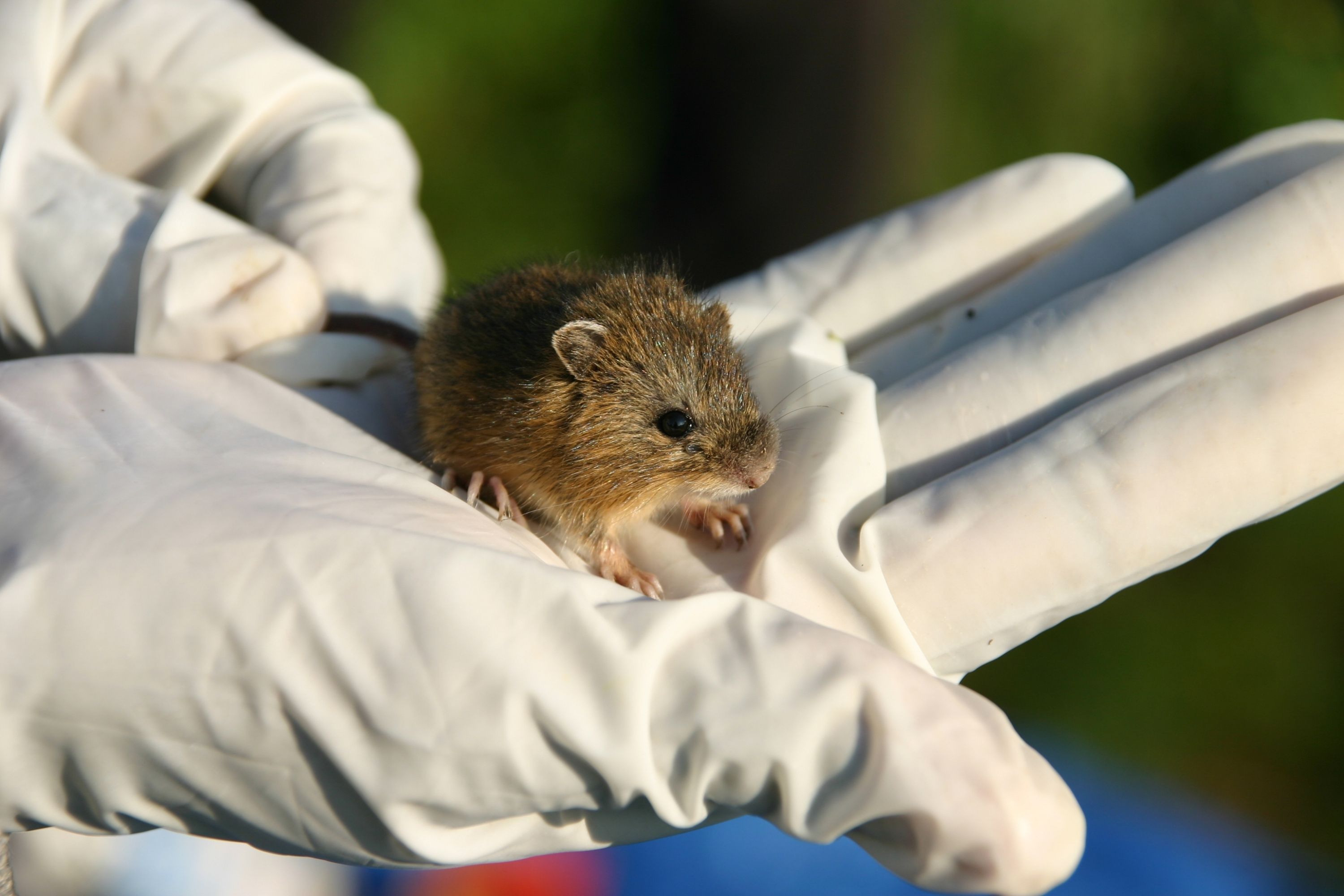Meadow jumping mouse
(Zapus hudsonius)

Description
The meadow jumping mouse (Zapus hudsonius) is the most widely distributed mouse in the family Zapodidae. Its range extends from the Atlantic coast in the east to the Great Plains west, and from the arctic tree lines in Canada and Alaska to the north, and Georgia, Alabama, Arizona, and New Mexico to the south. In mid-2014, the New Mexico subspecies of the meadow jumping mouse, Zapus hudsonius luteus, was listed as an endangered species under the federal Endangered Species Act. The meadow jumping mouse can range in length, from 180 mm to 240 mm, with its tail taking credit for most of its length, usually about 108 mm to 165 mm. A distinct characteristic about this species is its enlarged hind feet, which can be 28 to 35 mm long, and relatively short forelimbs. This gives it a kangaroo rat-like look, although its tail shows that it is not a kangaroo rat because it is not bushy at the tip. The pelage of this creature is short, and with somewhat dense, coarse hair. The color of the pelage has a few variations, but a broad dorsal stripe is always present. This broad dorsal stripe is of a darker brown color, with black tips, giving it a somewhat a grayish appearance. The sides are usually a lighter color, usually bright yellow to orange, and the under body is usually white, matching the color of its feet. These mice have eight mammary glands, four inguinal, two pectoral, and two abdominal. The male genitalia are inconspicuous except during mating season when the scrotal sac becomes enlarged and more visible. The tail (which again makes up most of this creature's body length) is bicolored, showing a darker color from above and a lighter color below. It is lightly covered with hair, which gets longer as it approaches the tip, but does not get bushy like the kangaroo rat. Its ears are very noticeable, and its whiskers are prominent. The head is small, and narrow, and it is considered to be relatively high crowned. The nose is short, yet it is pointy, and the eyes are relatively big. These mice also have a large infraorbital foramen. With the exception of the Aye-Aye, the meadow jumping mouse is the only mammal to have eighteen teeth with a dental formula of: 1/1, 0/0, 1/0, and 3/3. The upper jaw is short, and narrow. The incisors are longitudinally grooved, and its cheek teeth are small. Preceding the molars is a small peg-like premolar.
Taxonomic tree:







